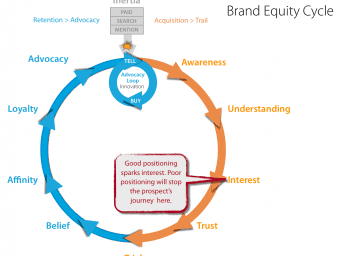Right Now, Right Here: Micro-Moments Change the Game for Brands
Consumer behaviour changed forever and so did the game for brands. Learn all about micro-moments and 4 tips how to win them...
2 Apr 2024 5005 Views
Written by Jessica Volk
Remember the last time you checked your phone? Maybe you scrolled down your Facebook feed? Looked up restaurants nearby? Searched for the best vacation destinations? Or the latest fashion trends? Chances are high it’s been anything like this, considering you check your phone on average 150 times a day (Lawson, 2015). 150 moments when you turn to your smartest and most loyal friend (hint: your phone) to seek an answer and satisfy your need.
What are mico moments for Google? And in Marketing?
Google introduced these moments in 2015 as micro-moments – a term that is buzzing around the internet ever since. So, what exactly are micro-moments? Here is how Google defines it:
“Micro-moments occur when people reflexively turn to a device—increasingly a smartphone—to act on a need to learn something, do something, discover something, watch something, or buy something. They are intent-rich moments when decisions are made and preferences shaped.” (Ramaswamy, 2015)
Not in all of these moments, brands can find a way into your life. When you’re catching up with your friends, all ads conquering your way will be swiped away immediately. But there are also some moments, you are actively looking to engage with a brand: for example, when you are searching for the “best running shoes” and impatiently wait for the perfect answer to magically pop up.
Consequently, for brands these micro-moments are the deciding moments to address the customer’s need, the unique chances to win the customer over – or as Google puts it, moments that are generating a “new battleground for brands” (Lawson, 2015).
Not convinced yet? Then take a look at the following statistics:
- “Of smartphone users, 91% look up information on their smartphones while in the middle of a task.
- Of smartphone users, 82% consult their phones while they’re standing in a store deciding which product to buy. One in 10 of those end up buying a different product than they had planned.
- Of online consumers, 69% agree that the quality,
timing, or relevance of a company’s message influences their perception of a
brand.”
(Ramaswamy, 2015)
Now ready to fight? To be best prepared for the battle, let’s first find out where the need for micro-moments came from.
Right now, right here, the consumers are in power
The concept of “micro-moments” is Google’s response to a tremendous change in consumer behaviour: people’s increasing expectation to get every answer when the need arises to know, go, do or buy something. People want their need to be fulfilled right now and right here (Gevelber, 2017). A trend that is probably more relatable and observable than any other buzzing around.
How did we end up here? The rise of internet and search engines like Google made it much easier to access all kind of information and choices, whenever and wherever consumers want – there are simply no more time and geographic constraints (Labrecque et al., 2013). And with knowledge comes power: While it has been initially believed that the internet will give the power to the marketers, the opposite is true and brings a new twist to the saying “the customer is king” (Deighton and Kornfeld, 2009). The more access to information and choices, the more knowledge the consumers get and the more empowered they become (Pires, Stanton and Rita, 2006). Long over are the times, when it was said “advertise and they will come”. Instead the consumers have become the driver of competition (Gazzola et al., 2017).
Even more so with their best companion and most powerful tool: the smartphone. Being loyally at the side of 87% of the consumers during day and night (Lawson, 2015), they have become used to the device delivering an immediate answer to all questions and requests – perfectly tailored to their needs.
But let’s face it: this is not going to stop. With their phones getting smarter every day, the consumers are ever-evolving and so are their expectations: they will be graving for more information, more personalised too, and please a bit faster!
The new consumer journey: every (micro) moment matters
With the new consumer behaviour also comes a new consumer journey. “Every moment matters” is not only a cheesy quote imprinted on thousands of kitchen calendars anymore, but for brands truer than ever: The micro-moment has become the most important part of the consumer journey (Think with Google, 2015c). Consumers no more follow a linear path to purchase. They don’t wait until being home to research a specific topic. Instead, their journey is now fragmented into hundreds of micro-moments – dispersed throughout the day and various channels (BrightEdge, 2017). This is true for all decisions: Small ones like researching the best shampoo to buy, but also big decisions with high consideration can start with a micro-moment. Think about booking your next holiday trip. You might start looking for flights to a better place, while waiting outside in the cold for the bus with your smartphone already in your hand. Then you might continue your research later on in the business meeting when there is again no end in sight. According to Kannan and Li (2016, p. 27), “on average a customer conducts 14 searches online across multiple brands, models, and online retailers over a 2-week period”. That already makes 14 micro-moments and 14 unique chances for brands to win the customer’s heart. Thus, to win the battleground, brands have to be there in every stage throughout the consumer journey and address the customer’s need better than everyone else.
The 4 key micro-moments in marketing
Luckily, brands don’t have to battle in all of the 150 moments a day. Google suggests focusing on the four micro-moments that are key in every consumer journey: I-want-to-know, I-want-to-go, I-want-to-do, I-want-to-buy moments:
Though the I-want-to-buy-moments seem to be most promising, there is also lots of potential hidden in the other three. Consider someone seeking an answer related to your industry, for instance “best presents for sporty friends” – the perfect I-want-to-know-moment to show up as a brand.
And 4 Tips How Marketers Can Leverage Them
With the expectations of the consumers, the requirements for marketers are rising too. But these requirements can also turn into opportunities for brands, if they manage to leverage the four key micro-moments. Here are four tips how to do it:
1. Level up your mobile game.
Considering that micro-moments increasingly take place on the phone, make sure that you got the following two fundamentals of your mobile game right:
- Ensure that all your content is optimized to be responsive for mobile.
- Improve your site’s load time: 29% of smartphone users will immediately switch to another site if it doesn’t fulfil their need. Out of those 70% do so, because the page is loading too long (Steimer, 2016).
2. Make it easy
Out of the 29% of smartphone users who will immediately switch to another site if it doesn’t fulfil their need, 67% do so, because there are too many steps involved to get the information they want or make their purchase (Steimer, 2016). Remember: the consumer of today is an impatient one. Try to make their visit to your site an easy one by eliminating steps and building in useful tools instead, for example a one-click functionality or automatic form fills (Think with Google, 2015d).
3. Get to know your audience and be there when it matters.
Figure out when your key consumers need you. Assess the most-searched terms for your business and see if you show up. If not, improve your SEO strategy and include paid ads (Think with Google, 2015d). Take the fact that “Ninety percent of smartphone users are not absolutely certain of the specific brand they want to buy when they begin looking for information online.” (Think with Google, 2015a). So, if you are there when it matters most, chances are high you will win.
4. Deliver relevant content.
Now that you managed to capture the consumer’s attention, make sure you provide the content your audience is looking for. You already assessed the most-search terms, now think about the answers the consumers may be seeking and what kind of information they would like to see in their I-want-to-know, I-want-to-go, I-want-to-do, I-want-to-buy moments. Then create content that is useful (Think with Google, 2015d). Consider this: “51% of smartphone users have purchased from a company/brand other than the one they intended to because the information provided was useful.” (Think with Google, 2015b).
Now, what are you waiting for? Go fight for the moment, before someone else does.
Read also: How to Bring Your Product Launches to New Heights!
References
BrightEdge. (2017). Understanding the Micro-Moment and the Modern Customer Journey. [online] Available at: https://www.brightedge.com/blog/understanding-the-micro-moment-customer-journey/ [Accessed 25 Nov. 2018].
Deighton, J. and Kornfeld, L. (2009). Interactivity’s Unanticipated Consequences for Marketers and Marketing. Journal of Interactive Marketing, 23(1), pp.4-10.
Gazzola, P., Colombo, G., Pezzetti, R. and Nicolescu, L. (2017). Consumer Empowerment in the Digital Economy: Availing Sustainable Purchasing Decisions. Sustainability, 9(5), p.693.
Gevelber, L. (2017). Micro-Moments Now: 3 new consumer behaviors playing out in Google search data. [online] Think with Google. Available at: https://www.thinkwithgoogle.com/consumer-insights/micro-moments-consumer-behavior-expectations/ [Accessed 25 Nov. 2018].
Google (2016). The four key micro-moments. Available at: https://www.thinkwithgoogle.com/marketing-resources/micro-moments/micro-moments-understand-new-consumer-behavior/ [Accessed 25 Nov. 2018].
Kannan, P. and Li, H. (2016). Digital marketing: A framework, review and research agenda. International Journal of Research in Marketing, 34(1), pp.22-45.
Labrecque, L., vor dem Esche, J., Mathwick, C., Novak, T. and Hofacker, C. (2013). Consumer Power: Evolution in the Digital Age. Journal of Interactive Marketing, 27(4), pp.257-269.
Lawson, M. (2015). Win Every Micro-Moment With a Better Mobile Strategy. [online] Think with Google. Available at: https://www.thinkwithgoogle.com/marketing-resources/micro-moments/win-every-micromoment-with-better-mobile-strategy/ [Accessed 25 Nov. 2018].
Pires, G., Stanton, J. and Rita, P. (2006). The internet, consumer empowerment and marketing strategies. European Journal of Marketing, 40(9/10), pp.936-949.
Pixels logo design (2018). mobile commerce. [image] Available at: https://www.pixelslogodesign.co.uk/blog/wp-content/uploads/2017/09/Mobile-Application-Development-1-573×240.jpg [Accessed 25 Nov. 2018].
Ramaswamy, S. (2015). How Micro-Moments Are Changing the Rules. [online] Think with Google. Available at: https://www.thinkwithgoogle.com/marketing-resources/micro-moments/how-micromoments-are-changing-rules/ [Accessed 25 Nov. 2018].
Steimer, S. (2016). Digital Next Practices: Micro-moment Marketing. [online] American Marketing Association. Available at: https://www.ama.org/publications/MarketingNews/Pages/digital-marketing-micromoments.aspx [Accessed 25 Nov. 2018].
Think with Google. (2015a). Being there in micro-moments, especially on mobile. [online] Available at: https://www.thinkwithgoogle.com/marketing-resources/micro-moments/being-there-micromoments-especially-mobile/ [Accessed 25 Nov. 2018].
Think with Google. (2015b). How to Beat Consumer Tune-Out with Useful Mobile Content. [online] Available at: https://www.thinkwithgoogle.com/marketing-resources/micro-moments/how-to-beat-consumer-tune-out-with-useful-content/ [Accessed 25 Nov. 2018].
Think with Google. (2015c). Identifying the Micro-Moments Within the Customer Journey. [online] Available at: https://www.thinkwithgoogle.com/marketing-resources/micro-moments/identifying-micro-moments-within-customer-journey/ [Accessed 25 Nov. 2018].
Think with Google. (2015d). Micro-Moments: Your Guide to Winning the Shift to Mobile. [online] Available at: https://www.thinkwithgoogle.com/_qs/documents/34/micromoments-guide-to-winning-shift-to-mobile-download.pdf [Accessed 25 Nov. 2018].
Like this post? You'll find more marketing insights in my new book: International Brand Strategy: A guide to achieving global brand growth, now available from booksellers globally. Order your copy here.






